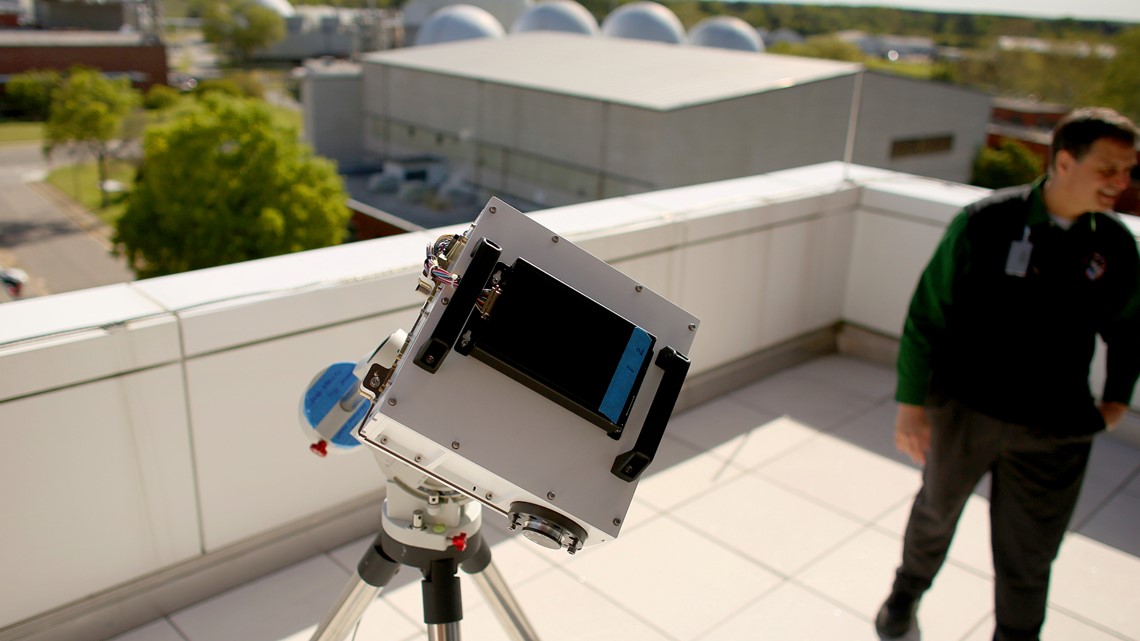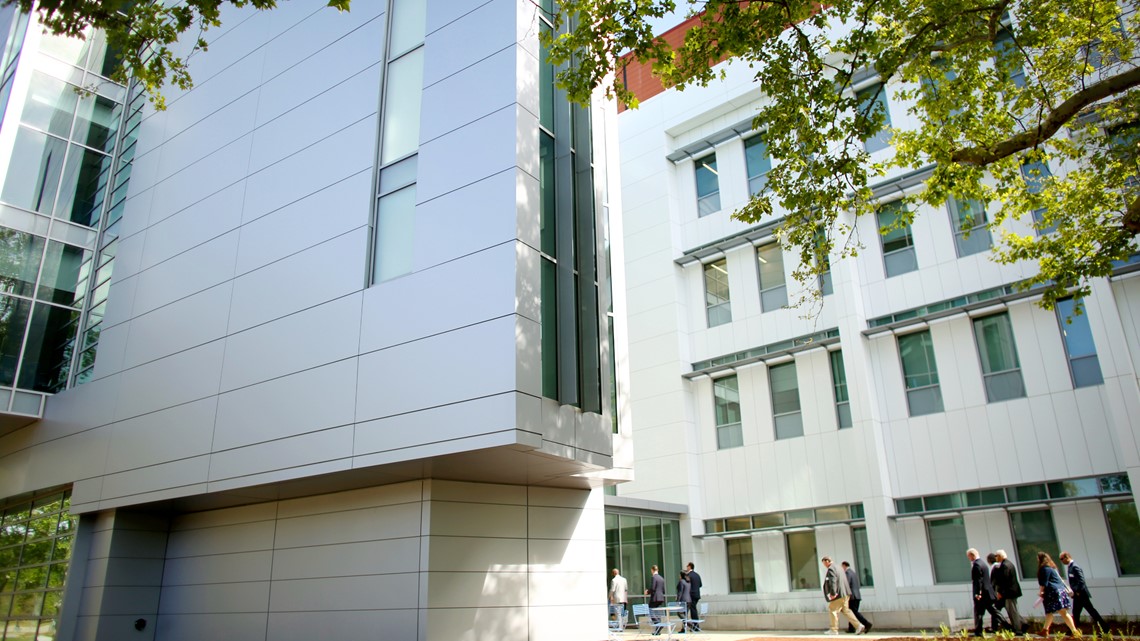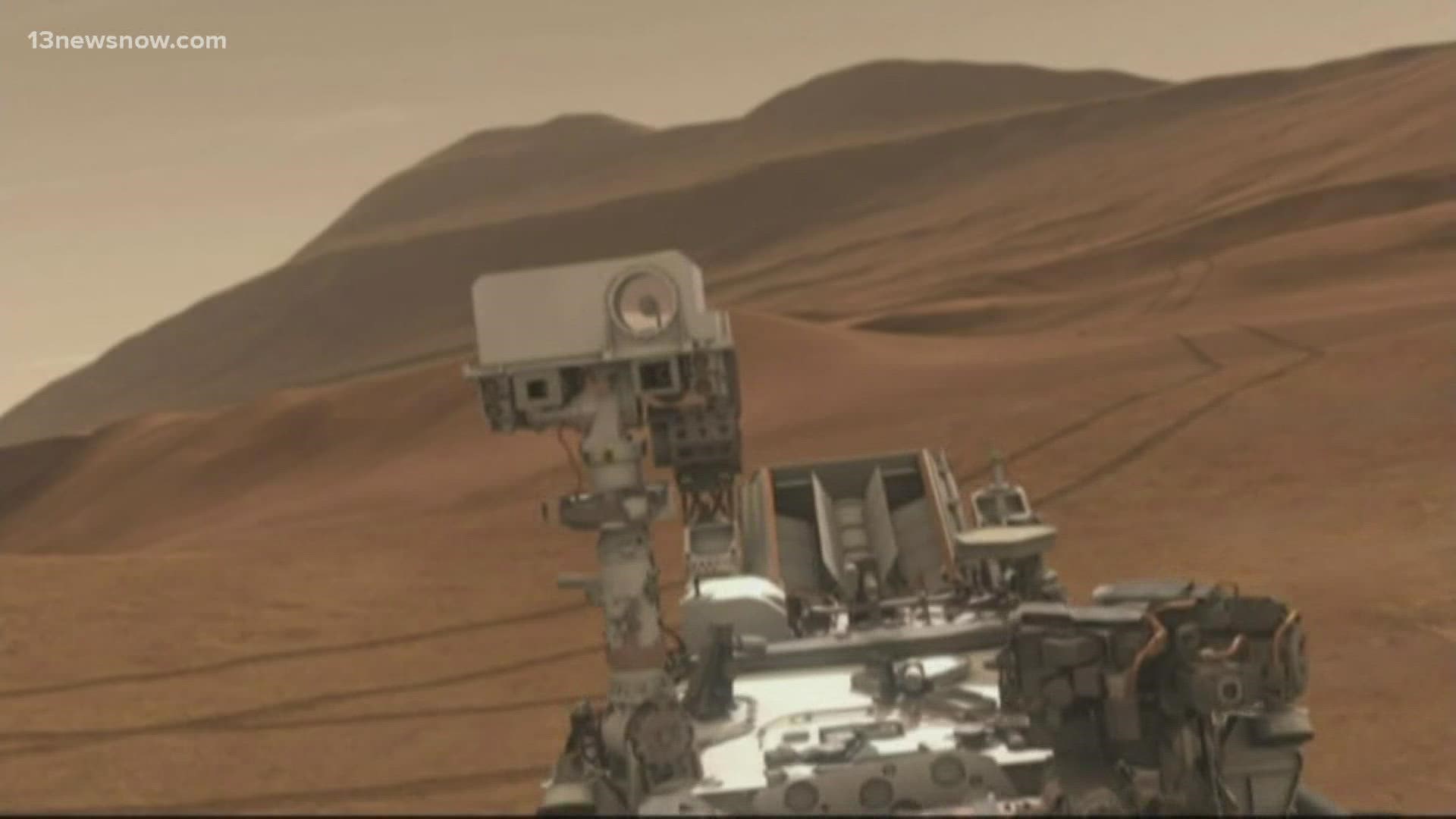HAMPTON, Va. — Author's note: The video above is on file from a separate story that aired on March 3, 2022.
Even before they cut the ribbon, a tripod-mounted prototype sensor was tracking the sun on the roof of NASA-Langley Research Center’s just-opened Measurement Systems Lab.
Langley’s first new lab in nearly three decades officially opened April 21. But Charles Hill, a scientist with NASA’s Stratospheric Aerosol and Gas Experiment, already set up the program’s SAGE-IV prototype to see if it can bring a 30-years-and-counting research program an even wider scope.
SAGE-IV is a telescope-spectrometer combination that can look at sunlight streaming through the atmosphere and measure what invisible gaseous chemicals are there and what microscopic particles are floating around.
Hill thinks it could replace the office-desk sized SAGE-III device, which is part of the external payload on the International Space Station when it comes to the end of its useful life.
The prototype’s size opens the possibility of deploying sensors in small satellites to scoop up that much more data over much wider geographies — data that can track pollutants, greenhouse gases and ozone that affect the climate and public health generally, he said.
The heart of the SAGE-IV is a roughly four-inch-by-eight-inch-by-twelve-inch box that contains a small telescope, mirrors and a spinning green plastic wheel that breaks sunlight down to various wavelengths that are fed into the box’s spectrometer. The way that the atoms and molecules in the atmosphere mask or reveal colors from sunlight tell Hill what’s in the air. Langley engineer Dave MacDonnell said his team came up with the design and have been refining it for several years.
Hill was working only a few steps from spaces where other researchers will be working on laser-based LIDAR systems that will help spacecraft precisely map landing spots as NASA returns to the Moon and ventures on to Mars, said NASA Langley Director Clayton Turner.


Those researchers will fire off their lasers at Peninsula water towers and other structures to test accuracy, as well as into the sky to get different readings on the atmosphere than Hill’s SAGE-IV does; they’ll work in interior spaces they can shield behind thick black curtains.
Five floors below, in a classroom-sized metal box, Jay Ely is researching how high doses of radiation can mess up aircraft electronics, navigation systems and structures.
“It’s basically a giant microwave oven,” he said.
Thick, black curtains upstairs keep stray rays of light from disrupting LIDAR lasers; the metal on the walls of his reverberation lab can keep stray radiation down to as little as one-ten-billionth of what’s emitted.
That keeps cellphones and electricity passing through some of the nearly 20 miles of wiring in the new Measurement Systems Laboratory building from throwing off what Ely and his team see — and also keeps them safe, when they step outside so they can zap aircraft parts and systems with potentially deadly doses of radiation.
Work at the new, $95.6 million Measurement Systems lab building will include sensor and antenna technologies developed critical for work on Langley’s personal air vehicles programs, as well as testing systems to further refine Langley’s computer models of aerodynamic flow and heating — the models that have already led to the development of a supersonic passenger plane prototype that doesn’t generate ear-splitting sonic booms.
A sensor jokingly dubbed the “proton torpedo” because it looks like something from Star Trek, will gather data researchers and engineers hope will help them are develop new ways for planes to dodge bad weather, other planes and even lightning strikes.
The Measurement System Laboratory’s work on sensors and measurement instruments will support three key NASA missions: landing spacecraft safely and mapping the Moon and Mars, finding more efficient and safer ways to operate aircraft on Earth and understanding the Earth’s atmosphere and climate, Turner said.
He said he believes the lab is designed and built “to encourage people to collaborate, to hear new ideas about ways to do things ... we don’t want people to be thinking only about a gadget, we want them to think about how is what we’re doing going to change people’s lives.”



